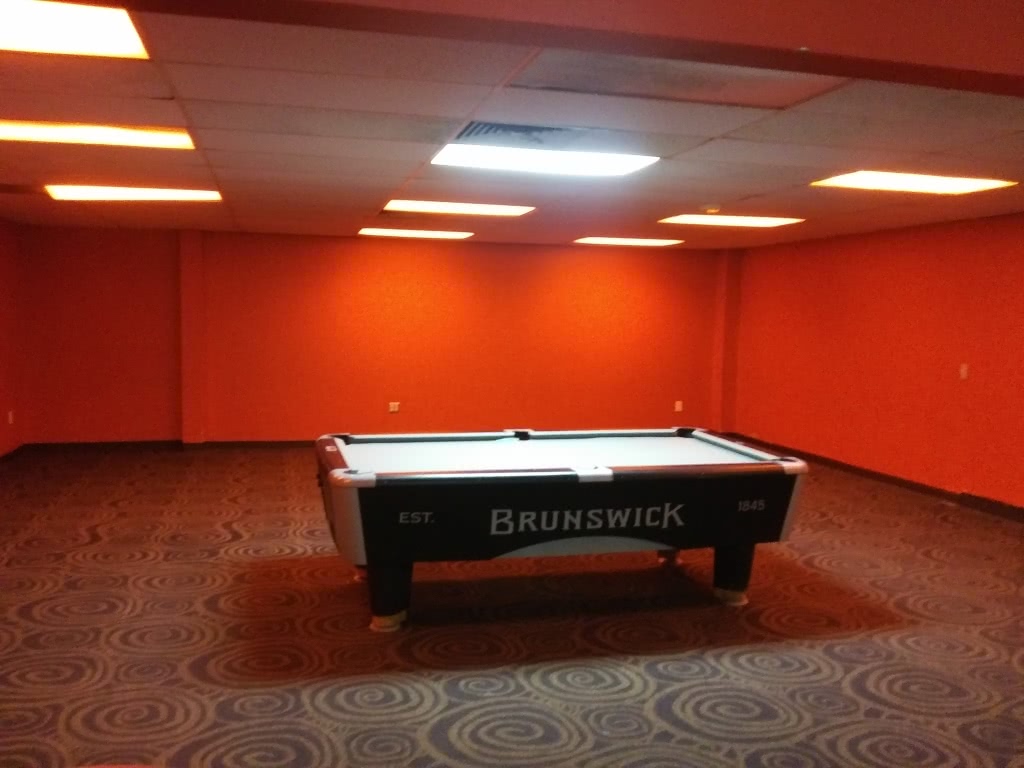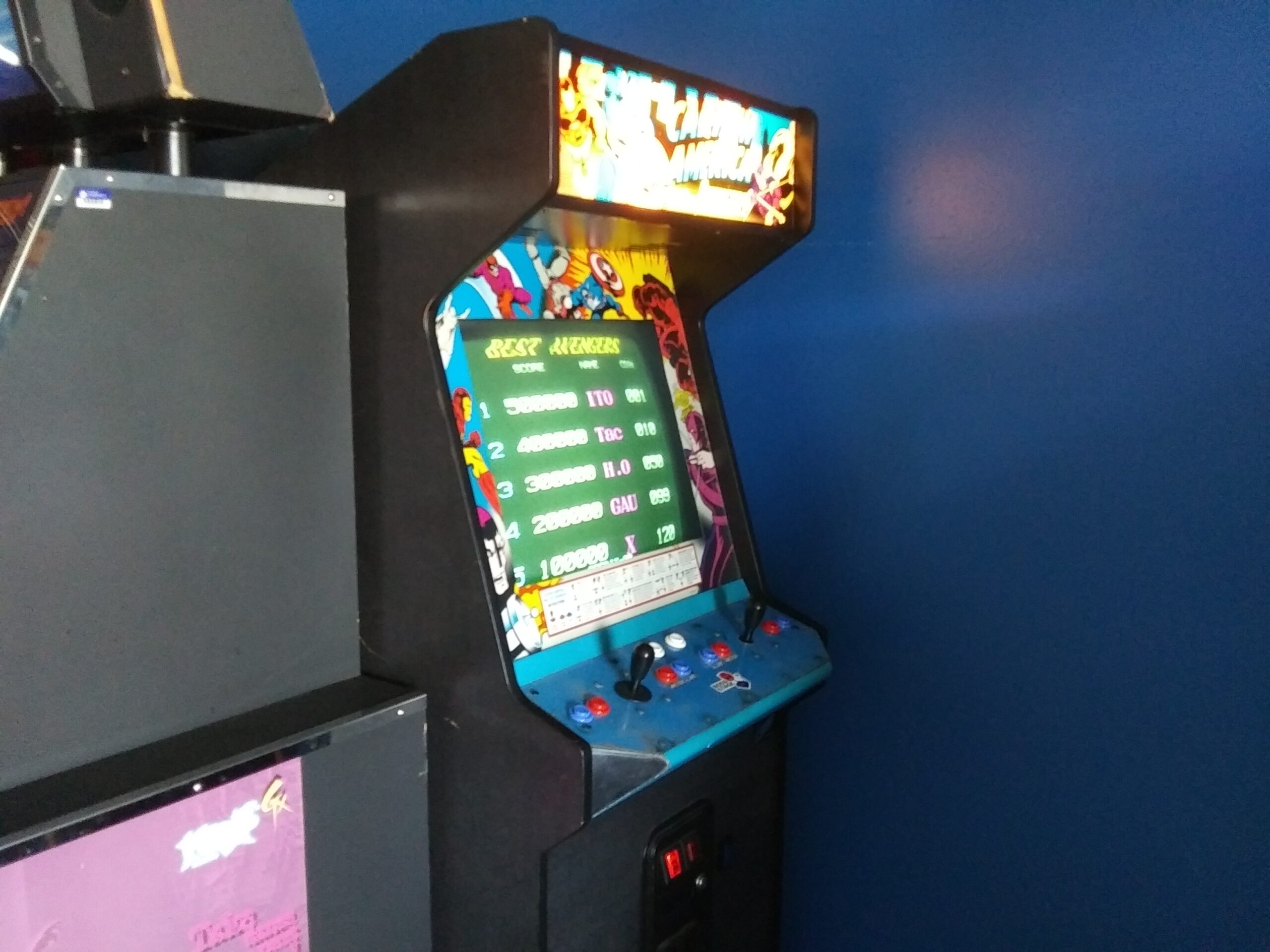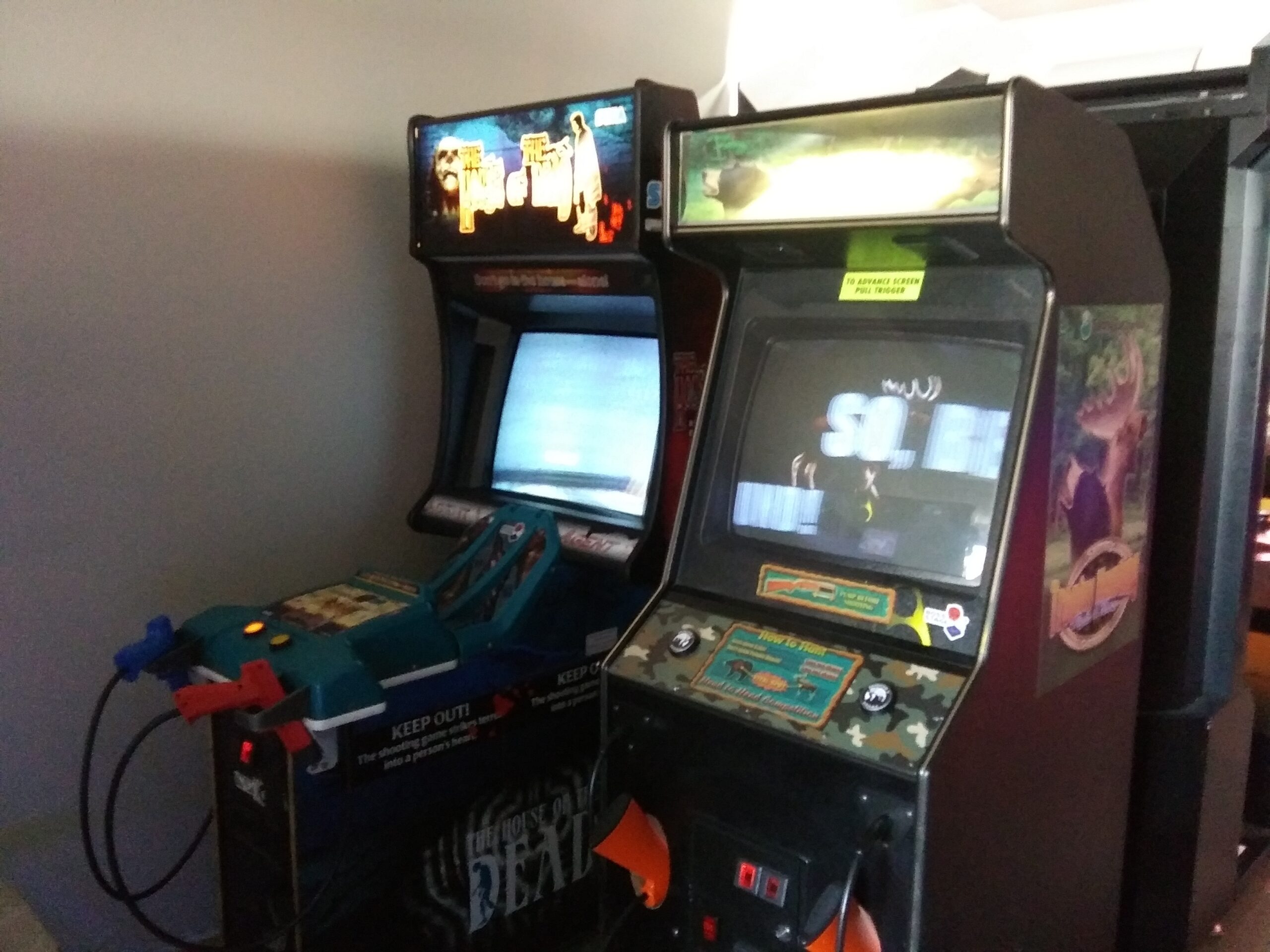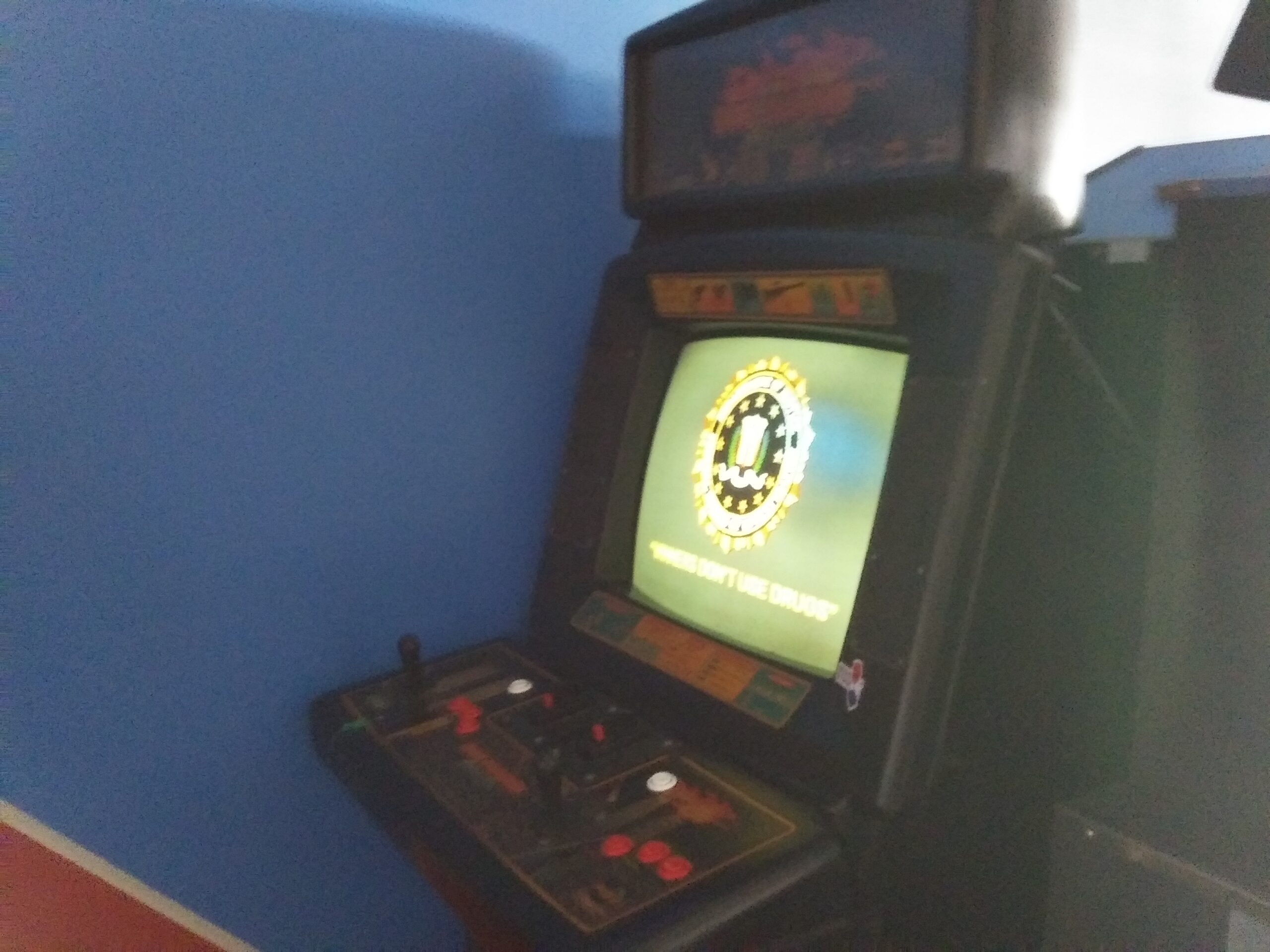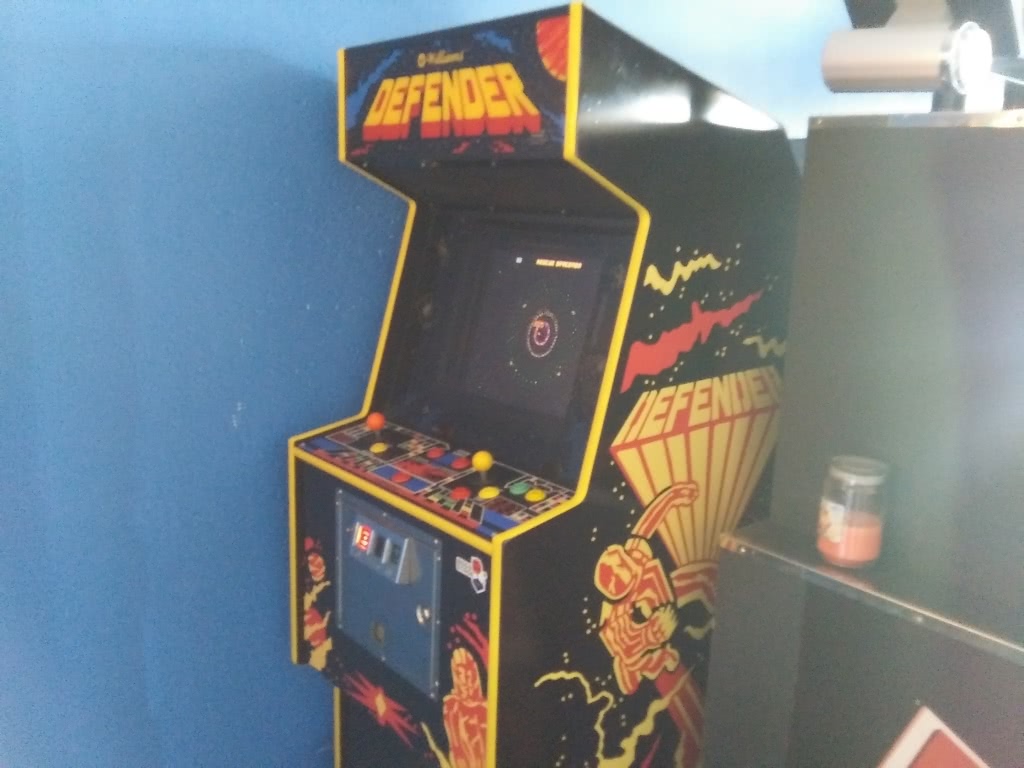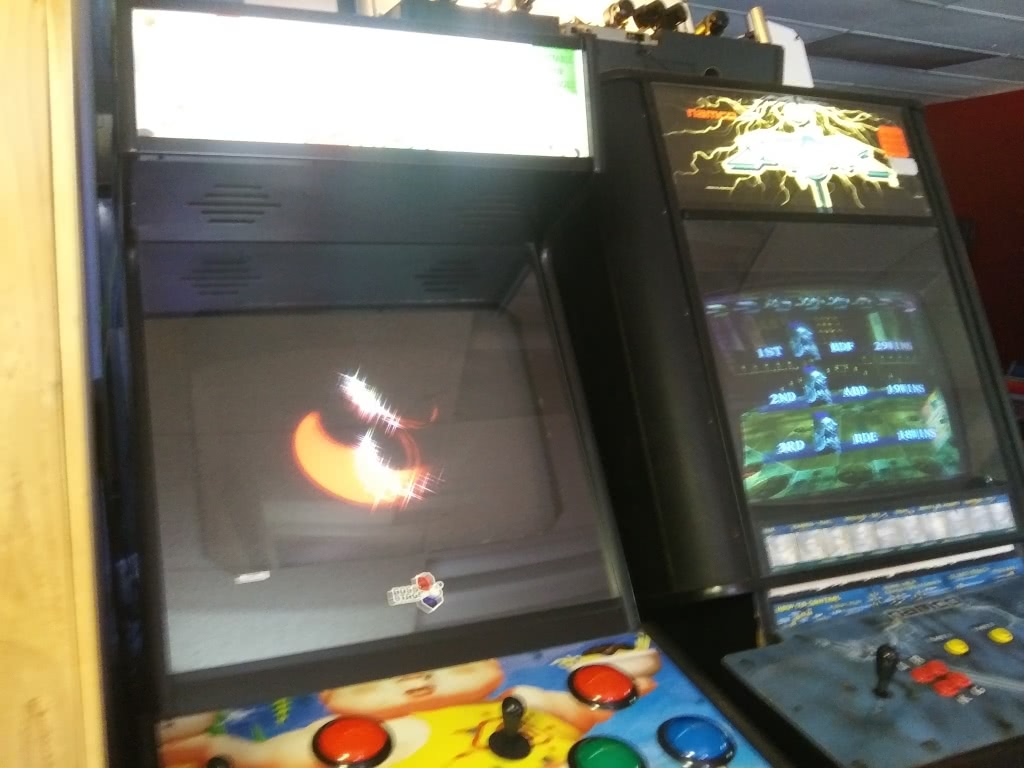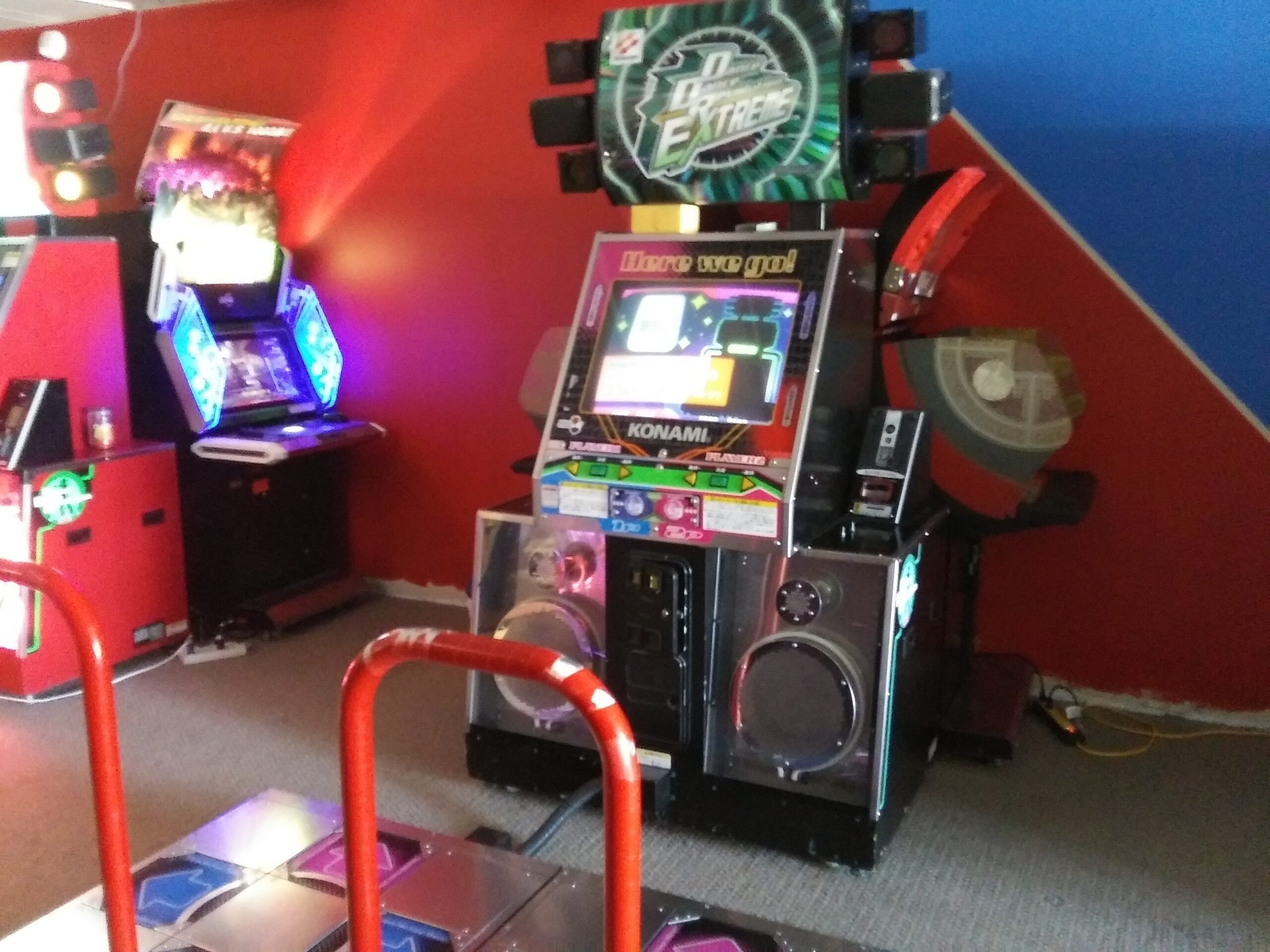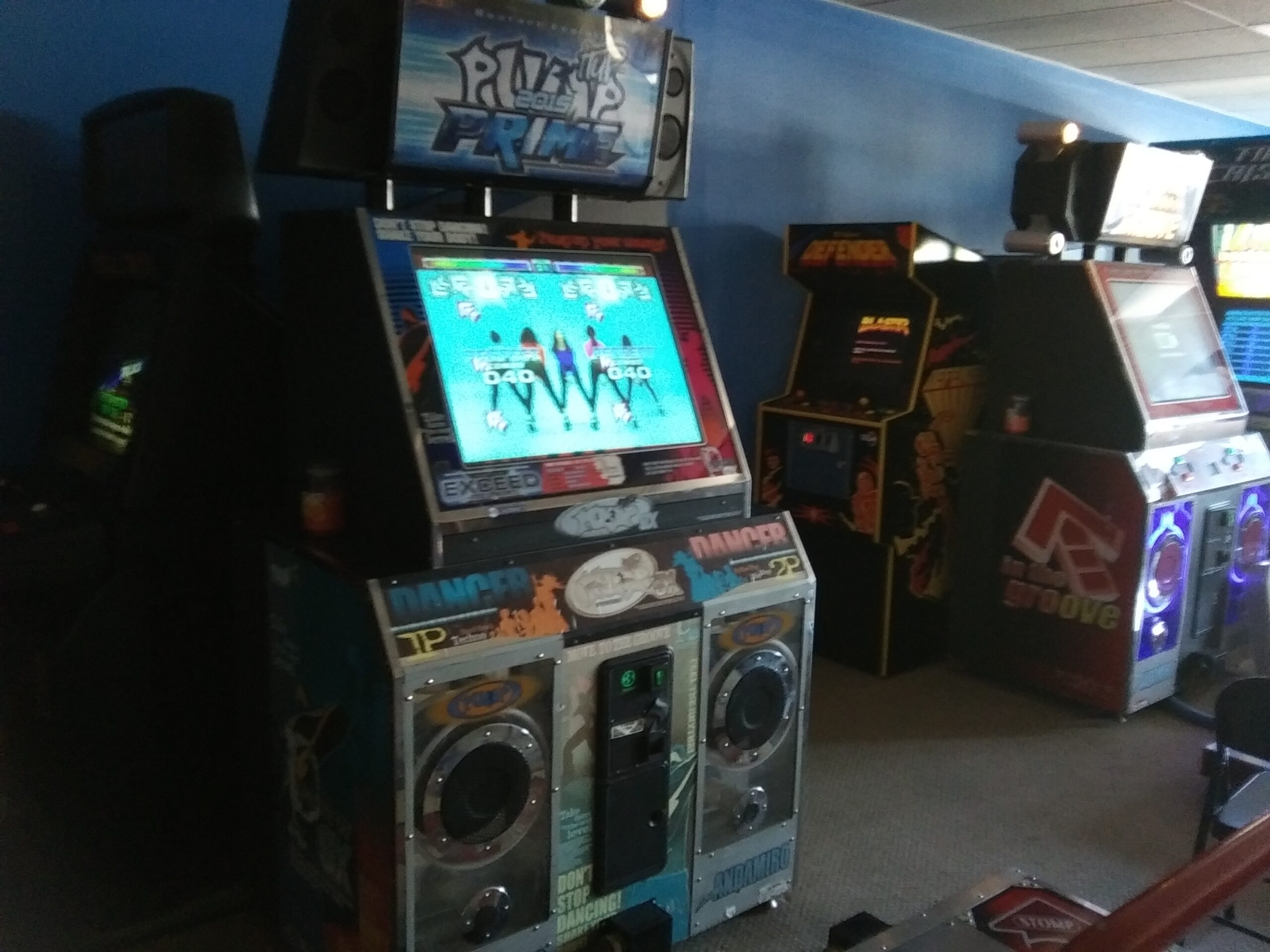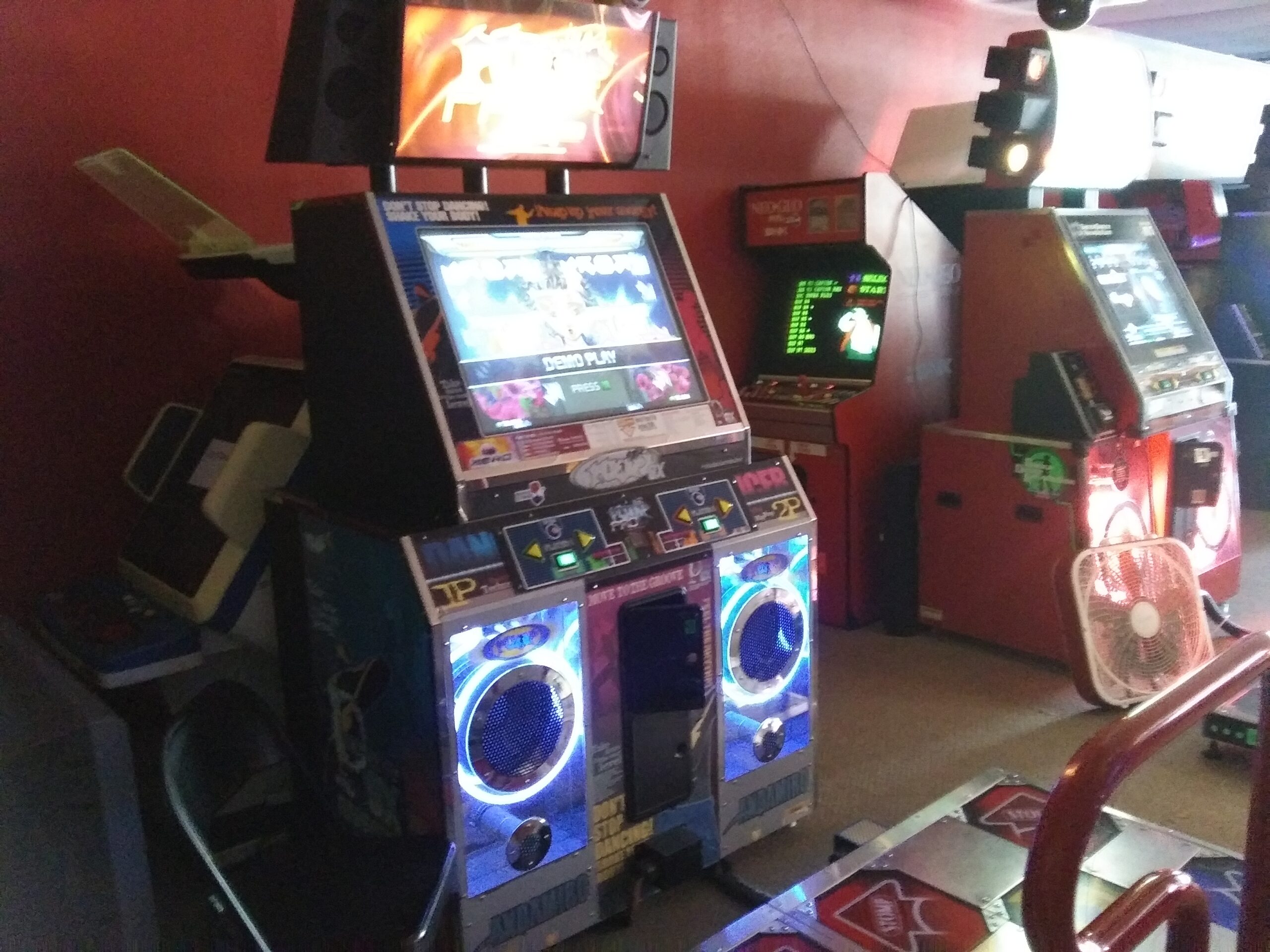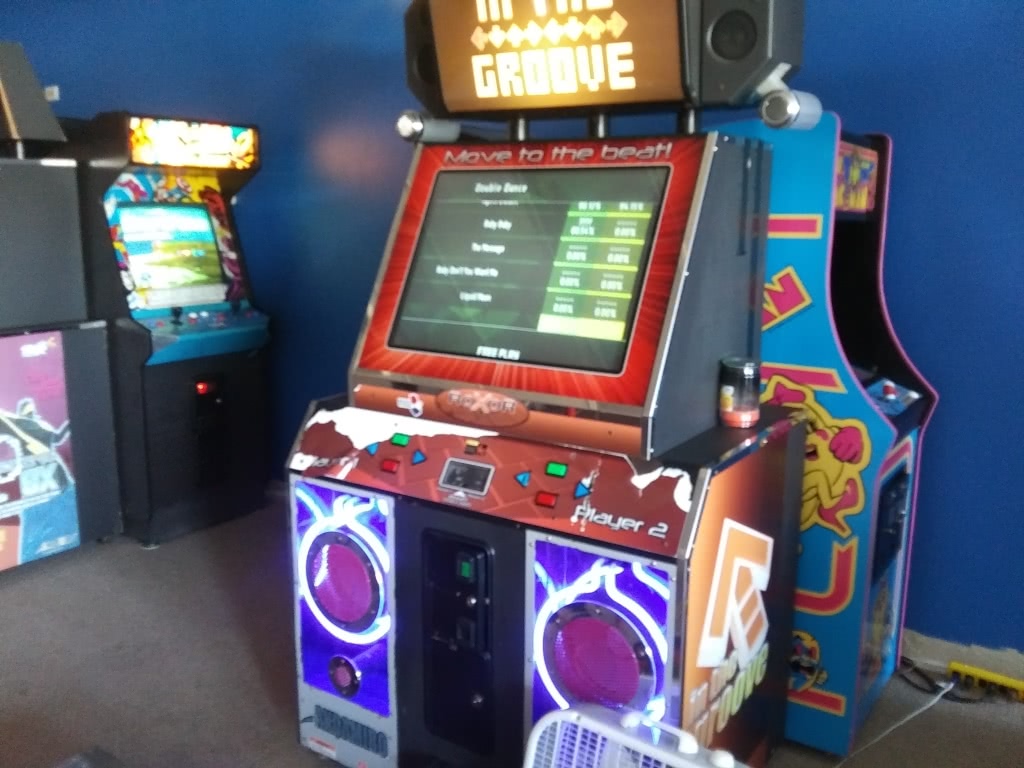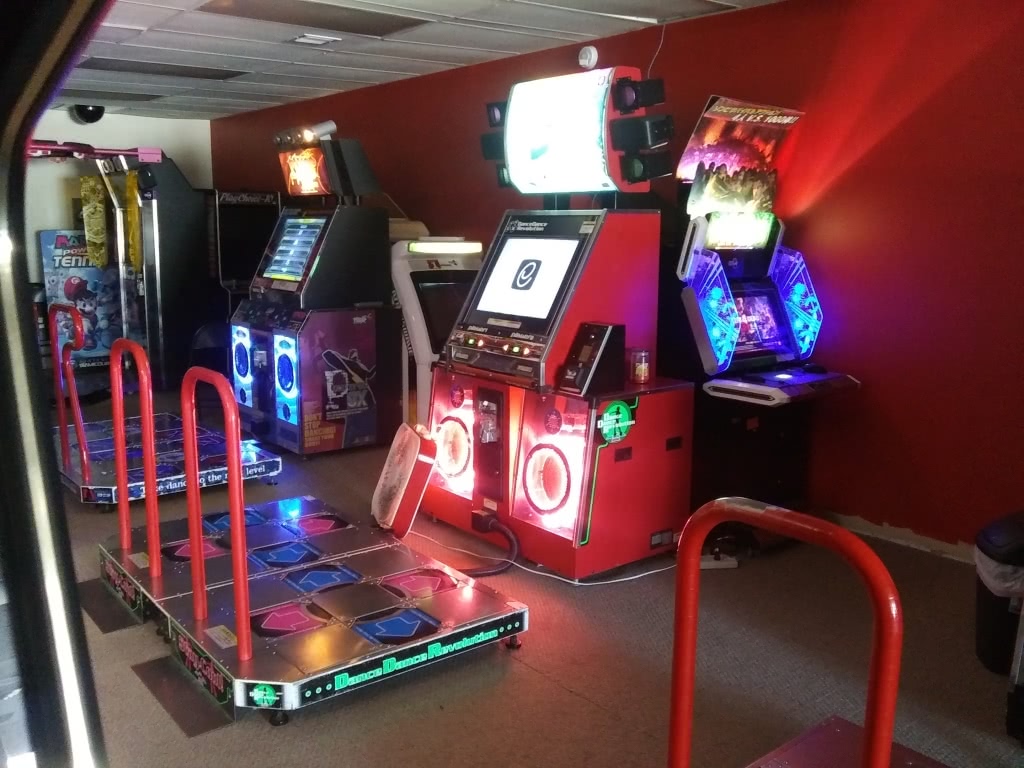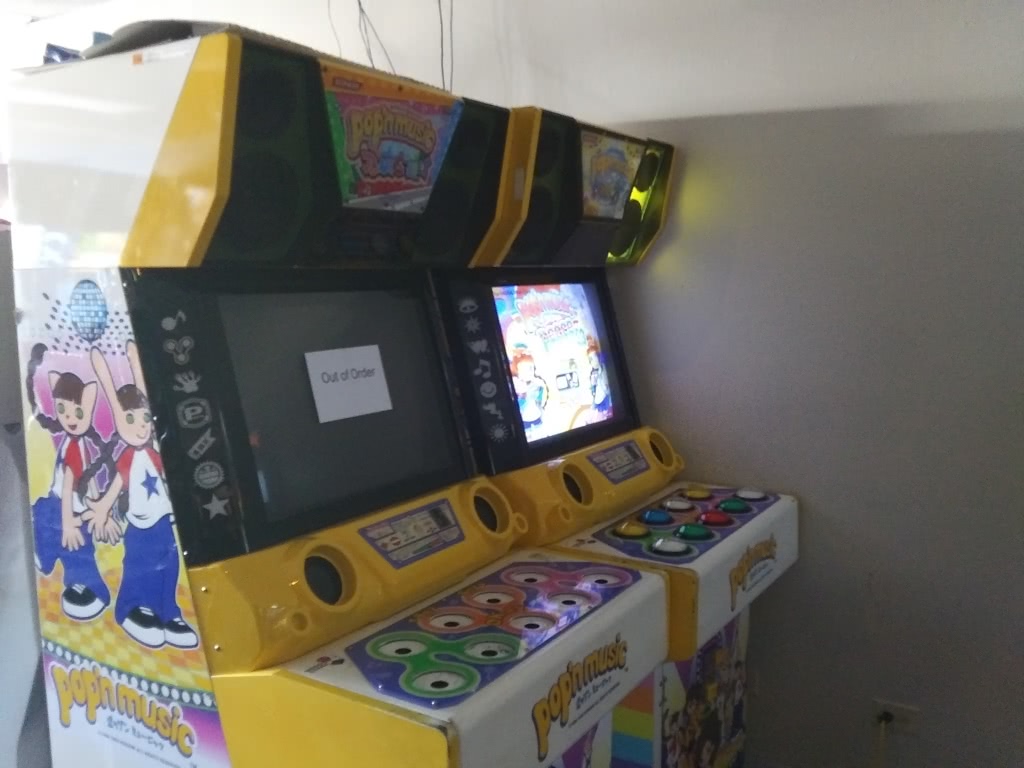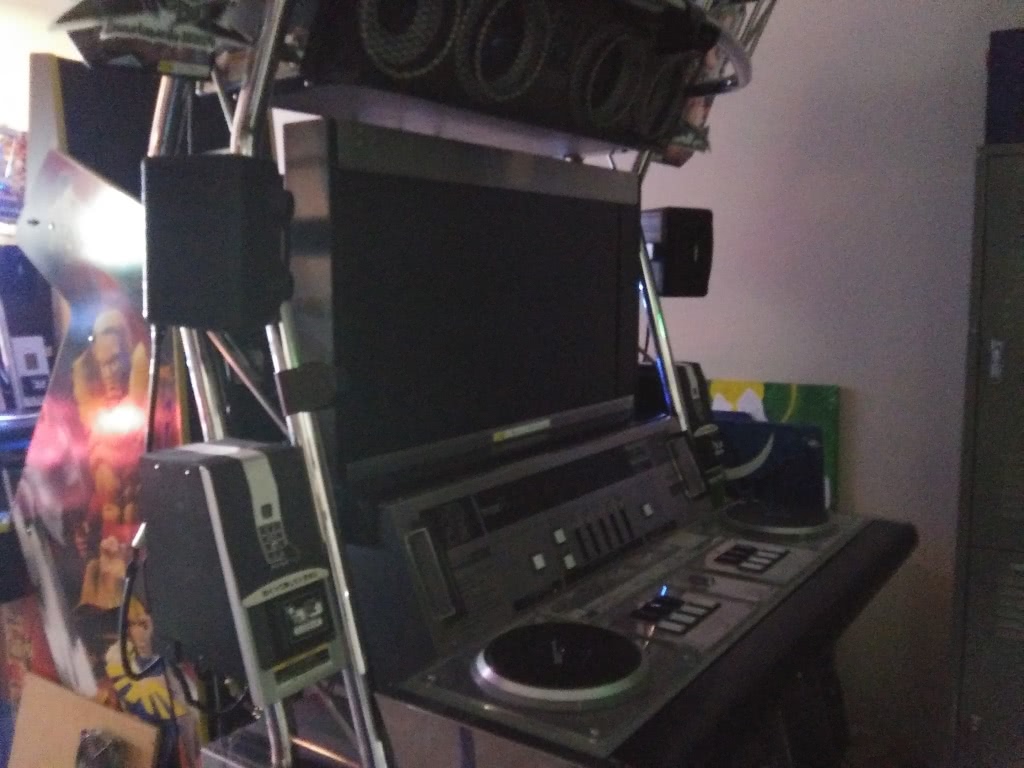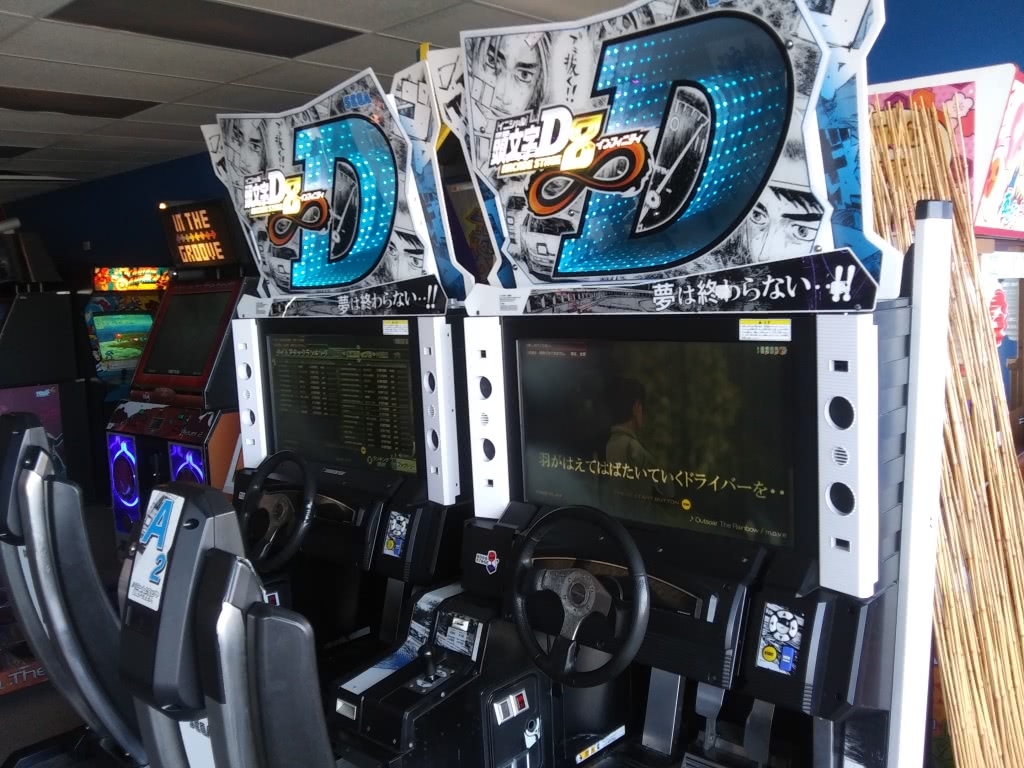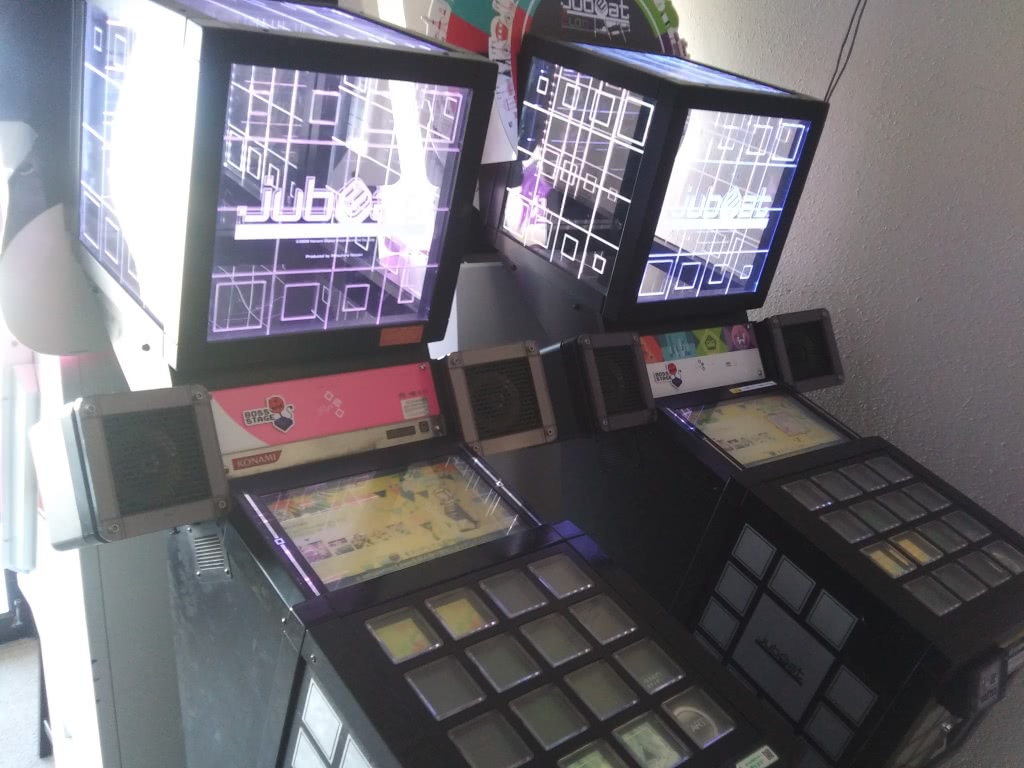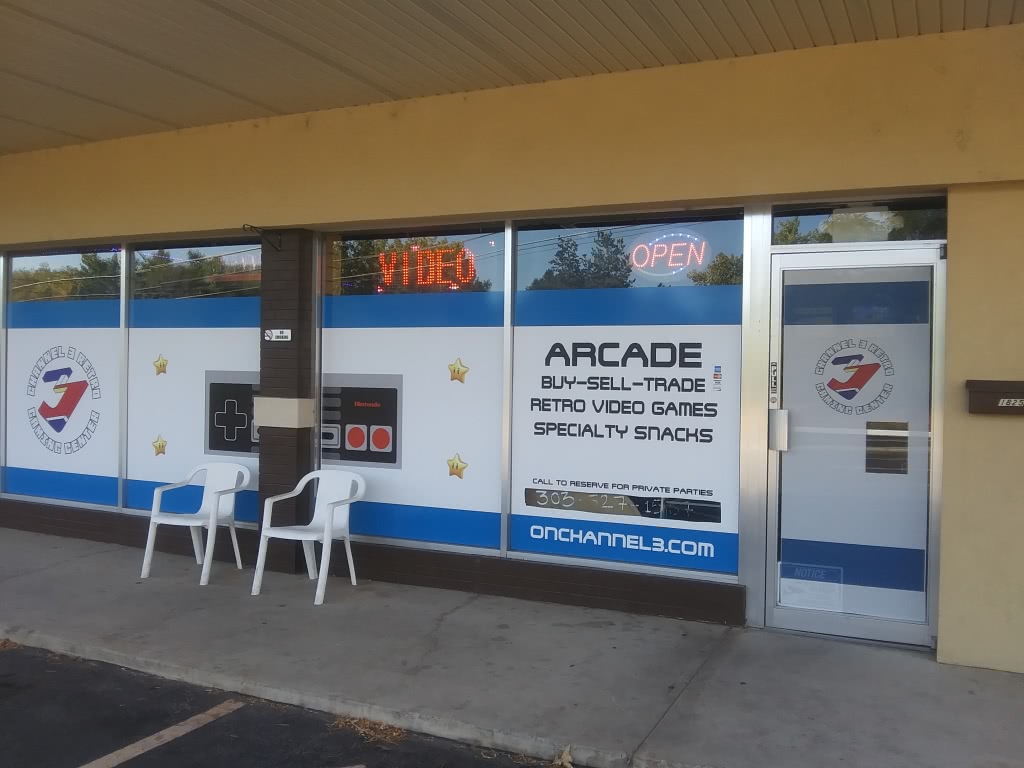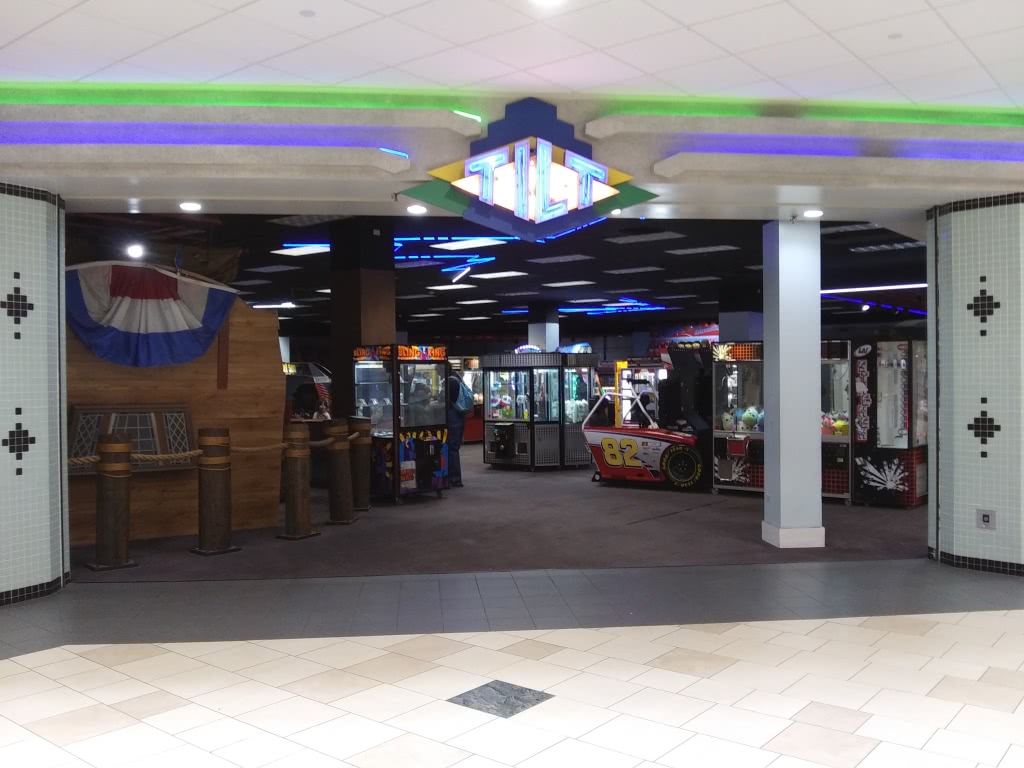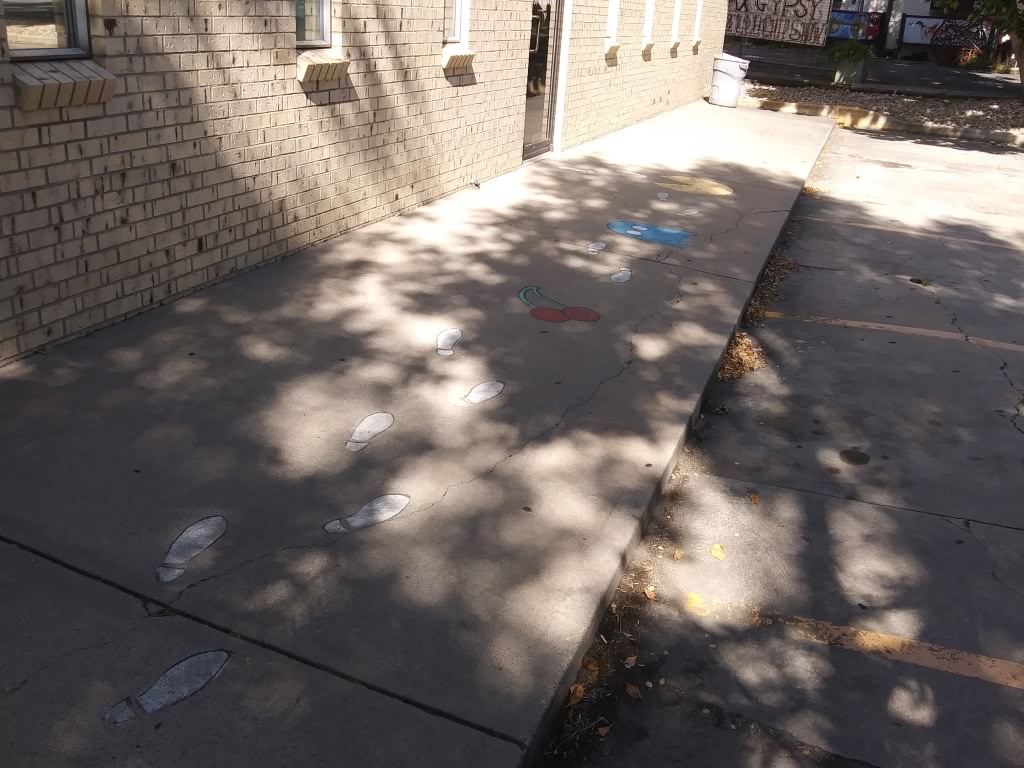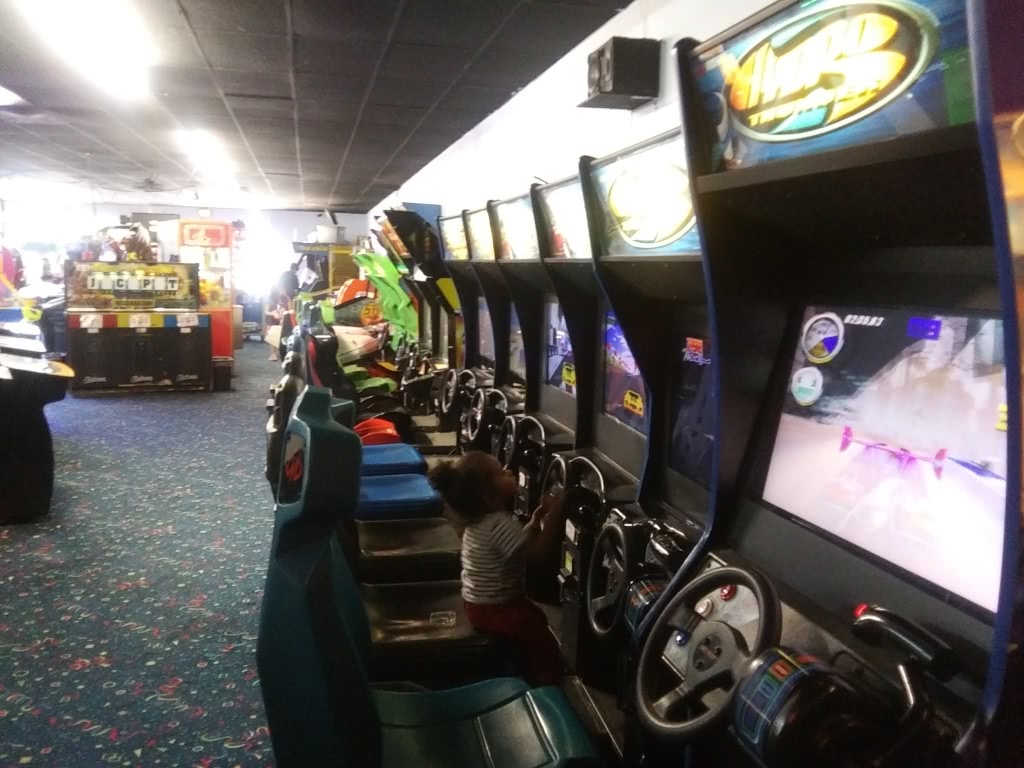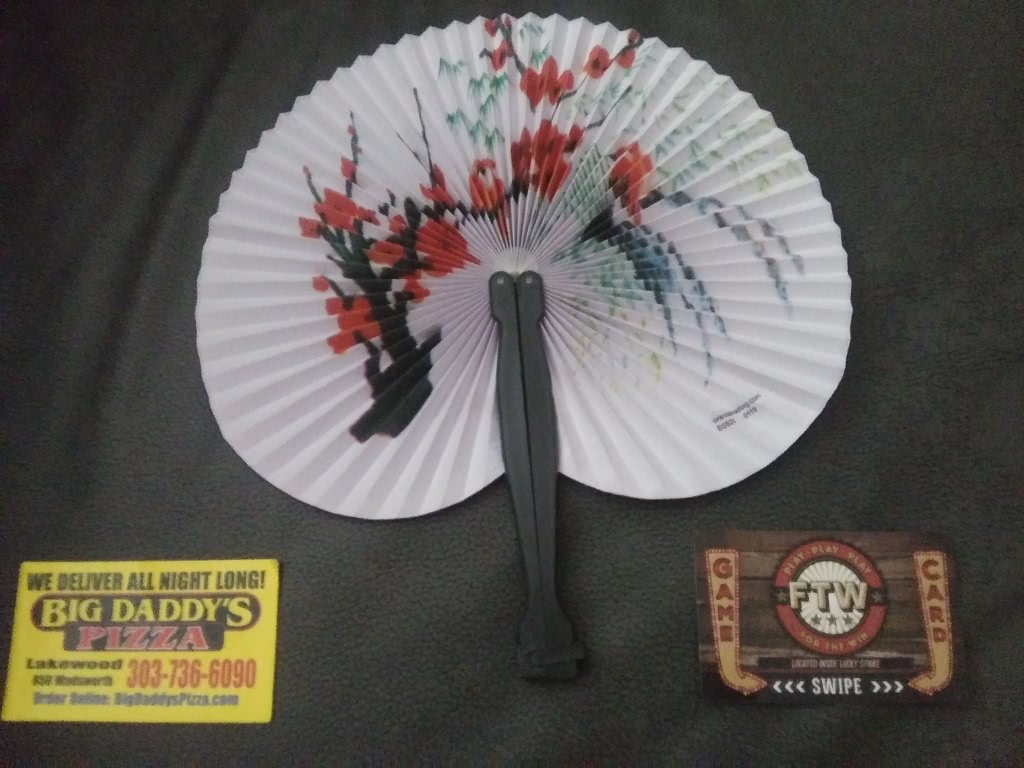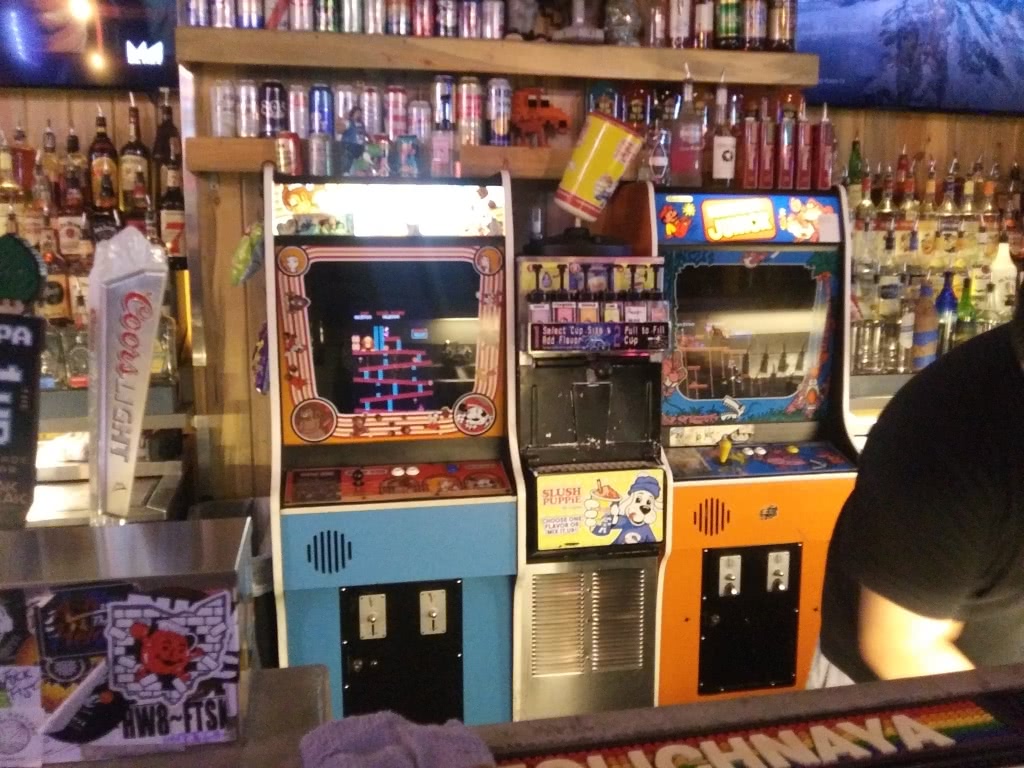
Ah, what a familiar sight this would become over the next week. The Airbnb I stayed at was a small room in a gigantic house where the entire upper floor was a hostel. I had my own area partitioned off, so it was pretty peaceful. When I got there last night, I spent two hours trying to get in because the mobile version of Airbnb’s website omits a part of the location information that had the door password. Once that got settled, it was great.

After cutting through that strange blocked-off road every morning, this was the road that awaited me. It was one of those roads just off the beaten path enough to have things like car repair places and U-haul rentals alongside empty fields. Walking far enough would eventually take you to a Walmart, where the local buses stopped.
I had lots of places to go in Denver. Where to first? I wanted to visit arcades to the north, south, east, and west. There was even one right next to where I was staying. After some musing over it, I decided to save that one for a day when I didn’t feel like doing much walking. Instead, I’d start by getting the two arcades up north out of the way.

But first, if you’ll recall from my last post, all I had to eat the night before was a block of cheese, so I needed to find some food. Luckily, this pretentious place declaring itself “Colorado Style Pizza” was on the way north.

BeauJo’s was going for a rustic vibe. I’d have taken more photos, but it was full of old people getting lunch that I didn’t want to bother. Just know the salad bar was stored in vintage bathtubs.

Well, here it is. “Colorado Style Pizza. The crust had almost a pretzel-crust feel, but otherwise, it was a pretty flavorless buffet pizza. Sorry Colorado, if this is your pizza, I’ll stick to Delaware’s offerings.
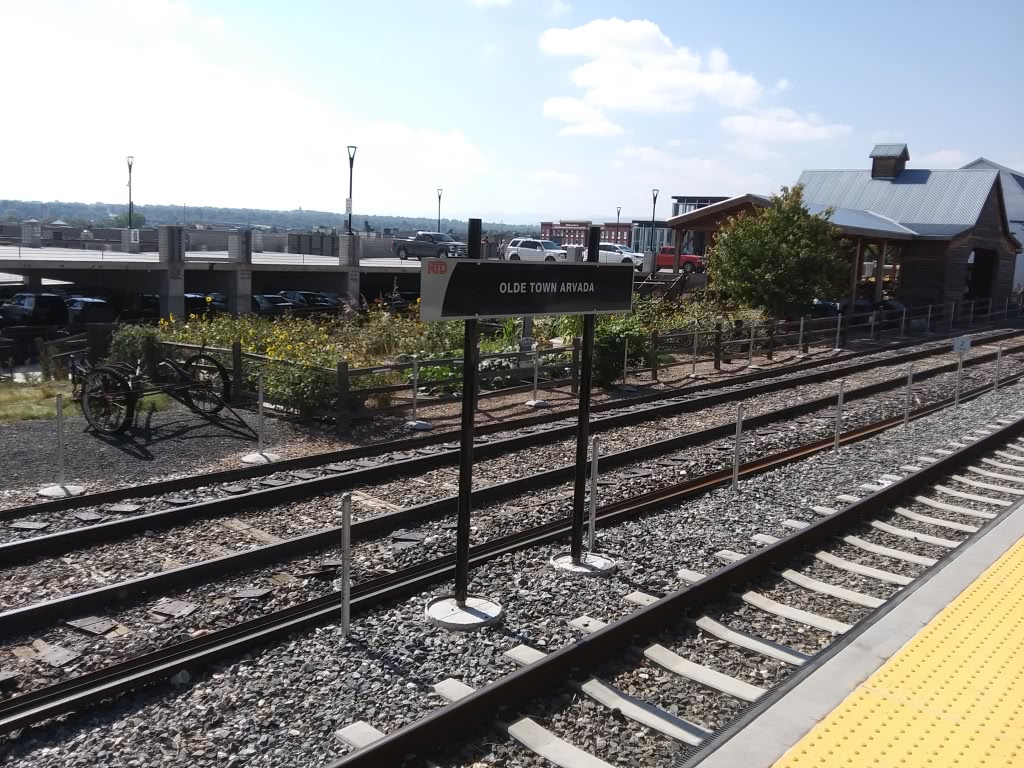
Oh yeah, there was a train adventure. I could have sworn this was later in the trip. While waiting for the train, I realized just how laid-back people in Denver are compared to up here in the Twin Cities. Then again, I’m just a tourist. It’s probably quite a bit different if you live here.

So here was my first destination of the day. A small area near a local high school. There was a group of kids making their way down to the Mcdonald’s. I assume that’s why the arcade I’m about to visit was so successful. I’d have loved to go to school next to an arcade like that, I thought to myself. Then I remembered that my arcade growing up was just a few blocks from school.

The arcade was opening up and still getting the machines turned on, so I did some exploring. I figured I might as well get this tradition out of the way early.

7-Eleven delivers pizza now? And the first delivery is FREE? God damn, why did I have to move to the one area of the country that doesn’t have them?

What the hell is Horchata?
Horchata (/ɔːrˈtʃɑːtə/; Spanish: [oɾˈtʃata] (
listen)), or orxata (Valencian: [oɾˈʃata]), is a name given to various flavoured plant milk beverages of similar taste and appearance. It originated at least as far back as 13th-century Valencia, where it is known as chufa horchata. In Spain it is made with soaked, ground, and sweetened tiger nuts, but in Mexico and other parts of the Americas the base is white rice. In West African countries such as Nigeria and Mali, it is known as kunnu aya. Different varieties can be served hot or cold, and it is even used as a flavour in other beverages, such as frappé coffee.
That answers my question, but it doesn’t explain anything.

And here it is. My yearly Slurpee. I only get one of these each year, so I make it a point to cherish them. By the way, I researched that blender-shaped cup I saw back in New York. It turns out it was a limited-time promotional item for Free Slurpee Day. Curse my luck.

It still wasn’t quite time for the arcade to open. With nothing better to do, I decided to press my luck.
I have a special talent where I can walk in any random direction and fine arcade machines, so I did exactly that. It worked this time, too. Sort of. There was a huge bowling alley down the road that looked like it HAD an arcade at some point, but now it’s merely a red room with a single air hockey table. Does this count as finding an arcade?

Anyway, onto what we came for. This arcade was situated in a discreet strip mall next to a grocery store and hobby shop. Lots of Denver’s arcades are tucked away in weird spots, now that I think about it…

Boss Stage is a tiny anime shop full of imported figures, anime DVDs, and other things along the same lines. As I’ve said, these small, intimate places aren’t my thing. It’s great for the locals, but coming in here as an outsider makes you feel like a tourist sticking your nose into someone else’s space.
This place reminds me a bit of one of my old haunts in South Dakota, where all the regulars knew each other. I have some great memories of that place.

Boss Stage seems to have taken over the space next door and used it to house their ever-expanding arcade. I’ve had my eye on this place for years, but we’ll get to that momentarily. For 11 dollars, you can play all you want. I’m not sure this photo does justice to just how many machines they had.
UPDATE: From this point forward, I’m completely re-writing the blog post.
I got permission to take photos of the machines here, but there was a condition: I couldn’t post any photos of certain machines on social media. Modern Japanese arcade games don’t work offline, and most western arcades don’t have access to the networks needed to run them, so they have to resort to less-than-legal measures to get the games running. You’re not supposed to run these private networks in public, but most arcades either accept the risk or disregard it. There was an incident a few years back where pirate networks became so widespread that Konami sent out C&Ds to every arcade they could find that was running one.
This arcade still honors the unspoken rule that you’re supposed to keep this kind of thing on the down low. I don’t think posting it to this blog matters much since it’s pretty easy to Google a list of every arcade running an illegitimate version of the game, but I respected their request. The original version of this post had to skim over a lot of the arcade.
But the original also featured this line:
If this place ever gets shut down, I might revamp this blog post to include all of the other photos I took.
In 2021, this arcade was finally forced to close its doors once and for all. Since I’m updating Token-Crow to the new domain, this is the perfect opportunity to completely re-write the post. The arcade is gone now, so it’s only right that one of the last remaining records of it be thorough.
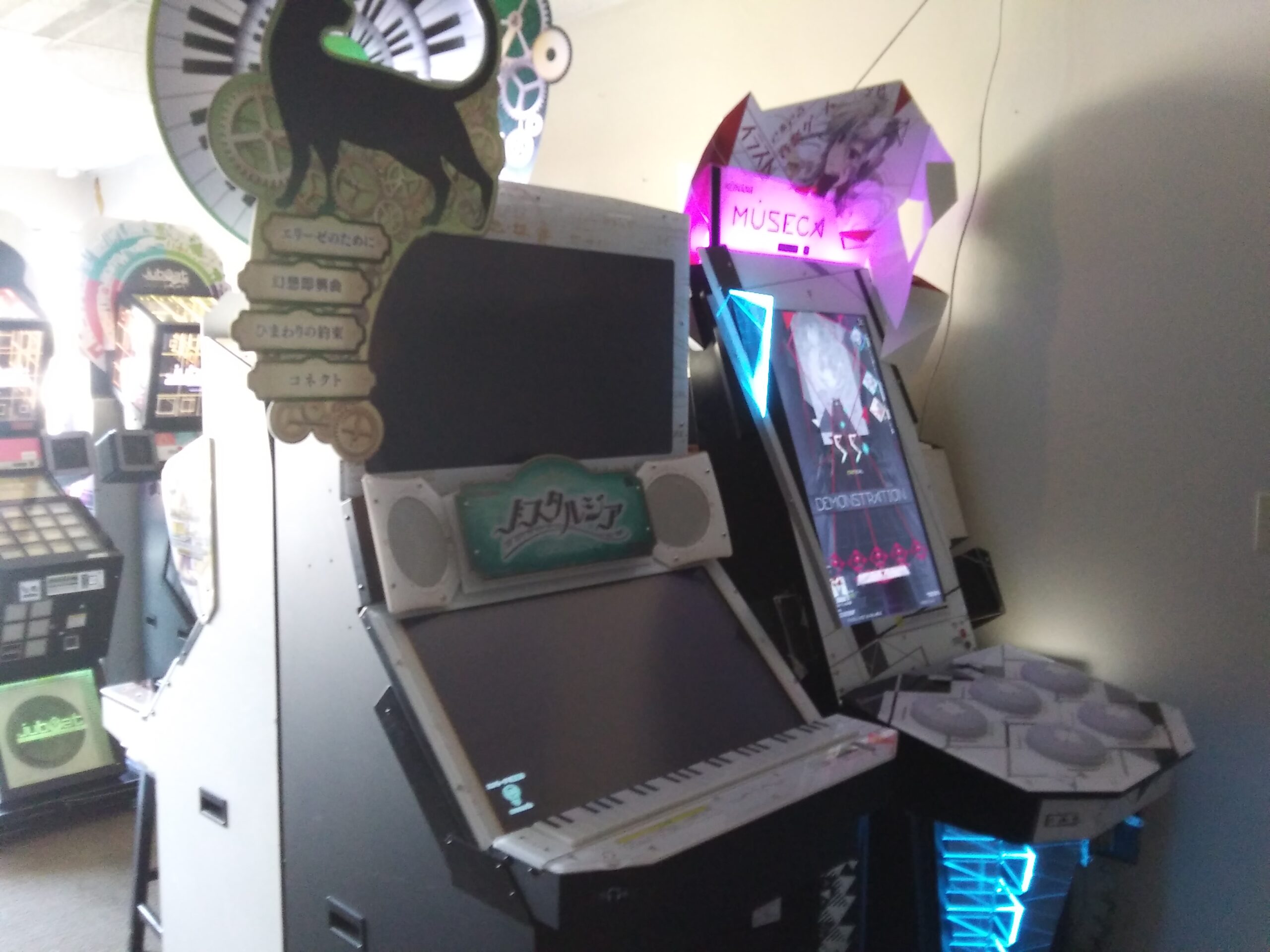
You’ll still notice that I intentionally tried to snap a lot of the photos when the machines were on black screens so that I could use them in the post without issue. In the first version I made, the Museca machine had to have the screen scribbled out in MSpaint so that I could use the photo of NOSTALGIA This is the first time I’ve been to an arcade that had NOSTALGIA, but I’ve seen it make the rounds at conventions a few times.
I’ve had my eye on this arcade for as long as I can remember. I’m not sure what it was that grabbed my attention back then, but I’ve watched it slowly grow over the years thanks to the magic of Google Images. When I first started observing, it was only the main “anime store” part of the building, with a row about seven arcade machines along the side wall. They weren’t fancy imports. No, they were random machines like The House of the Dead and Die Hard Arcade (and a lone DDR machine).
I don’t know for sure exactly which of these did and didn’t come from that era, but they all stand out for being much older than everything else in the arcade. Or at least, more western. If you look carefully in the background of my other photos, you can spot a couple others that I didn’t worry about taking a dedicated photo of.

It was broken at the time, but this is Reflec Beat. I’ve talked about it once before, but it’s essentially a cross between a rhythm game and Arkanoid.
What makes it notable is that it’s fairly rare as far as rhythm games go in the states. I’m told that, much like Jubeat and SDVX, Reflect Beat machines can be obtained in Japan for under 100,000 yen. Isn’t it strange that Jubeat and SDVX have proliferated themselves across the United States, but Reflect Beat is generally only found at the most dedicated of rhythm arcades? I’ve asked around and nobody seems to have a good answer, beyond it being less popular than the other two.

When I visited, only three known (public) ParaParaParadise machines were left in the country. Ironically, all three of those arcades have since shut down or gotten rid of it. This particularly one was broken.
I know I just did two broken games in a row, but that isn’t a trend with Boss Stage. I promise.

When I first started visiting out-of-state arcades in the early 2010s, I’d often run into 5-key Beatmania, Dance Maniax and DrumMania. They were almost always in bigger arcades that bought them up during the DDR craze, then never bothered to get rid of them. But that was an entire decade ago. In the meantime, many of those arcades have either shut down or decided these machines were too old to dedicate floor space to anymore.

This is a virtual mahjong machine. They had a couple more of these back in the main room. I’m not 100% sure, but I THINK they originally had a mahjong room in the area that eventually became the arcade. The mahjong tables were moved to the tabletop game store next door.
Mahjong games are pretty common in Japan, to the point where there’s an entire arcade input scheme made specifically for them. If you’ve ever configured controls in mame, you’ve probably seen the long list of Mahjong keybinds. This is the first, and probably last, time I’ve ever seen a game running that configuration in person.
I skipped over every single one of these machines in the original blog post. It was the injustice that caused me to completely rewrite it!
They had FIVE dance machines: Classic DDR, Modern DDR, two versions of Pump It Up (Prime 2 and Pro 2), and In The Groove. No matter what your preference, they had you covered. Extreme even had memory card slots. That’s the second most dance machines I’ve ever seen in one place, and easily the best lineup.

And they have a full-sized Taiko machine. I’ve never seen one of these at an actual arcade before, but I know they’re not that rare.
Here in the twin cities, I’ve had three or four people ask me if we had a local Taiko Master. There was one at Mall of America for a month or so, but otherwise, no. Minneapolis is a complete wasteland as far as rhythm games go. I’ve never been to any other major city that didn’t have a single rhythm game outside of dance games. Some of the locals tried to put together a private rhythm game arcade at one point, but it ironically turned out that the idea was too popular and collapsed when they had to re-evaluate their business model.

Here’s a game I’ve never seen, or even heard of, before. It’s called Come On Baby! and it’s a series of button-mashing minigames themed after a baby sporting event. It’s like what Bishibashi would be if its minigames were more Mario Party-esque.
Come On Baby! was developed by a Korean studio called Expotato. The only other notable games they’ve developed were a couple of Come On Baby! sequels and a Beyblade game.
But you wanna know what surprised me the most about it?

What’s an arcade full of imports if it doesn’t have a candy cab or two?
I believe these two were an 80s game called Devastators and the Arc System Works Fist of the North Star game.

This is an early 2010s Konami game called Steel Chronicle. Specifically, Steel Chronicle Be. Although I’ve heard of it, I can’t find much information about this series.
Unfortunately, this is one of those games like School of Ragnarok or Gunslinger Stratos that has a lot of mechanics but no English menus to explain them. It seemed alright from what I played, but it was the kind of thing I’d have to spend a couple of hours with before I could really get a good feel for.

This was easily the biggest surprise for me. For those not in the know, this is the arcade version of Puzzles and Dragons, one of the biggest mobile games in Japan! I used the 3DS version of this game through sheer coincidenceto occupy myself on the flight to Denver, so I went in knowing exactly how the game works.
As far as I know, this was the only public version of the game available in the United States. There was an arcade in Idaho that tried to order one, but it got destroyed during shipping.

…the arcade version of Left4Dead? That’s certainly an interesting decision.
Unlike at Galloping Ghost, I actually got to play it this time. It’s exactly what I expected it to be: The PC version of the game with a Japanese coat of paint. Each of the four main characters are replaced with average-looking Japanese people, with the character banter re-written accordingly.
Here are a few more machines that I left out of the original post. Some because they were running recent versions of Bemani games. Some because I just had nothing to say about them.

So there you have it. Boss Stage Games. A small local rhythm game community with a great assortment of machines crammed into a side room. But I haven’t gotten into the true tragedy of this arcade yet. There was one more chapter in this arcade’s life that happened just a few months after my visit.
I’m sure they won’t mind me borrowing a few images off their Facebook page, considering the circumstances…
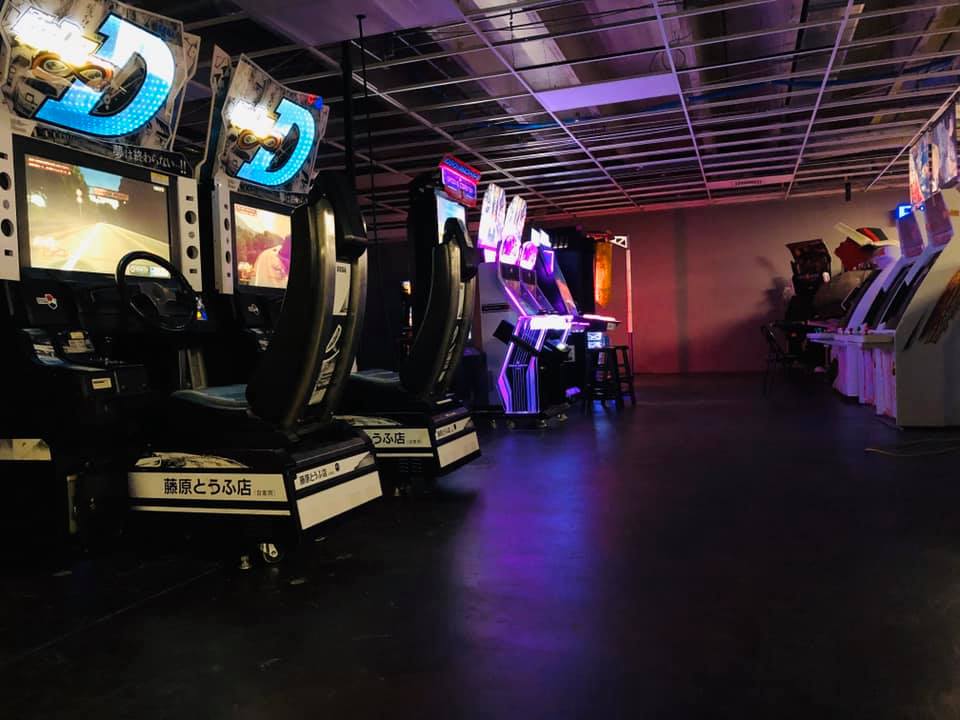
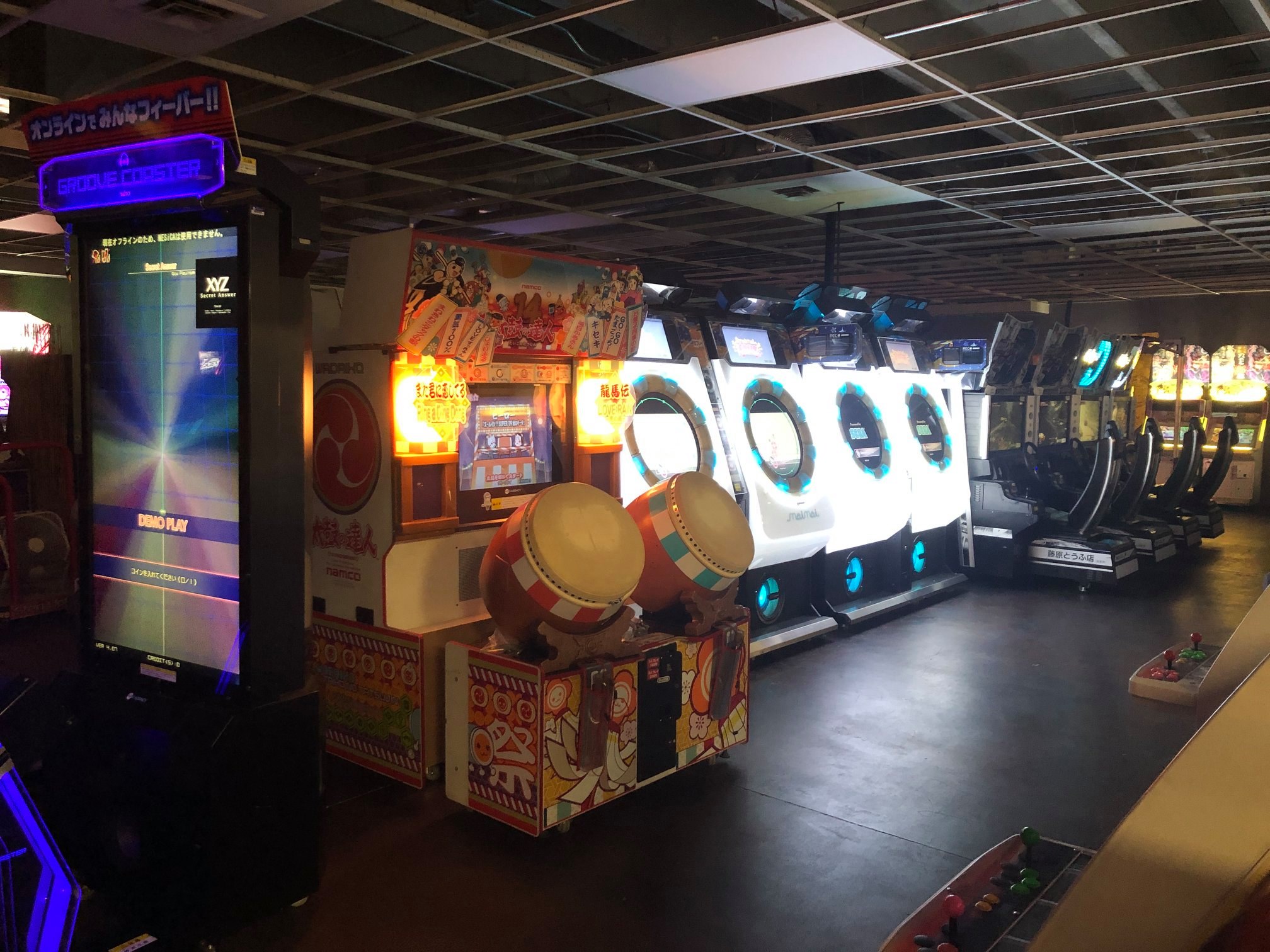
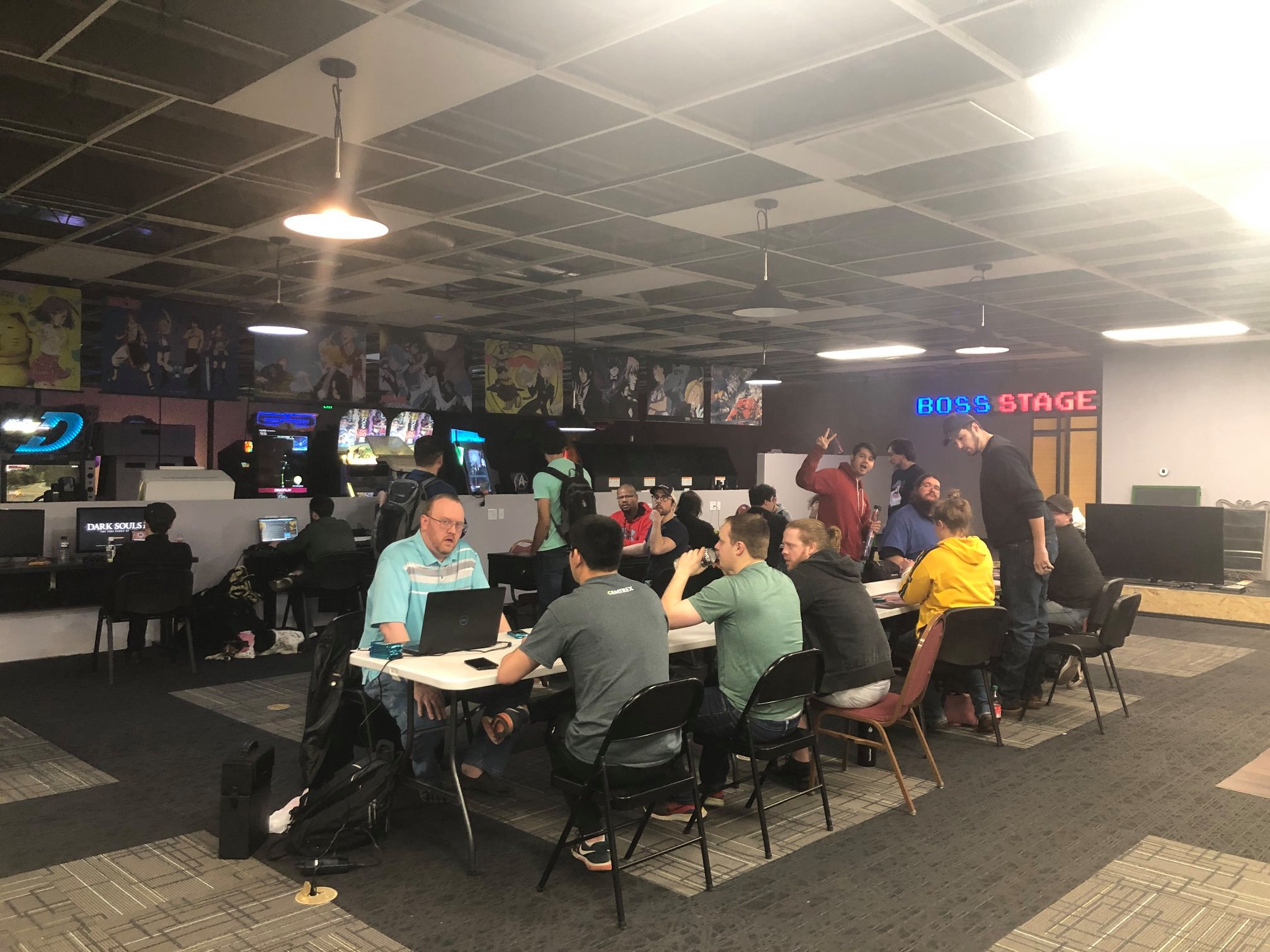
When I made my visit, the girl at the counter asked if I’d like to make a donation toward helping the move. Boss Stage Games were already lined up to move to a much bigger venue. No longer would the arcade be crammed into the side room of a strip mall anime store. Much of the money going into the new location was funded by donations. They even raised 1500 dollars for a drinking fountain that could refill water bottles! The new location was the combined effort of Boss Stage’s staff and the local players.
- On February 21, 2020, the new Boss Stage Games (Enterprise?) opened their doors to the public. The new location featured a handful of new games, a large tapletop/LAN area, and a small food court
- On March 25, 2020, the governor of Colorado issued a stay-at-home order that forced the the newly-opened arcade to close
- On April 7, 2020, Boss Stage opened a GoFundMe to help pay for its rent, raising over 7000 dollars
- On May 9, 2020, they were allowed to re-open
- On November 3, 2020, the owner got sick and they were forced to temporarily close their doors
- On May 19, 2021, they announced the owner had suffered a ventilator-related injury and the store would no longer be able to reopen
And so ends the tragic story of Boss Stage’s final year. Many arcades fell in 2020, but this particular one met one of the most depressing ends possible.

So now you understand why I needed to redo this blog post. I withheld a lot about this arcade the first time out of respect for the arcade’s wishes. But I felt it would be more disrespectful if that was how I chose to immortalize Boss Stage Games. It was a unique arcade that clearly meant a lot to regulars. I can’t keep a record of what this arcade meant to everyone who frequented it, but I can preserve the single time I was lucky enough to visit it. As long as this blog lives, there will always be at least one memorial to this lovely arcade.

